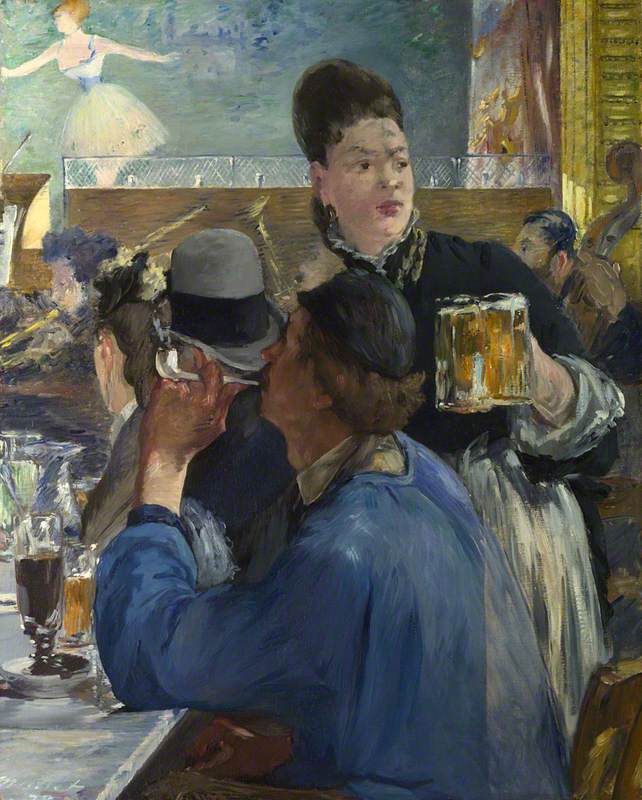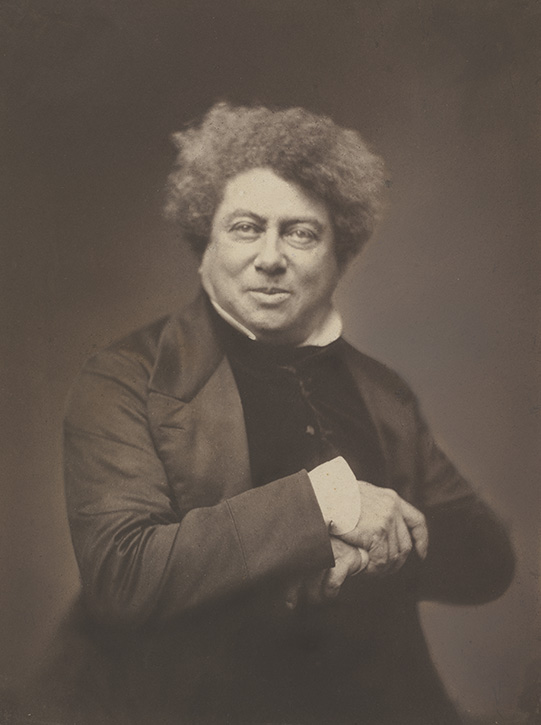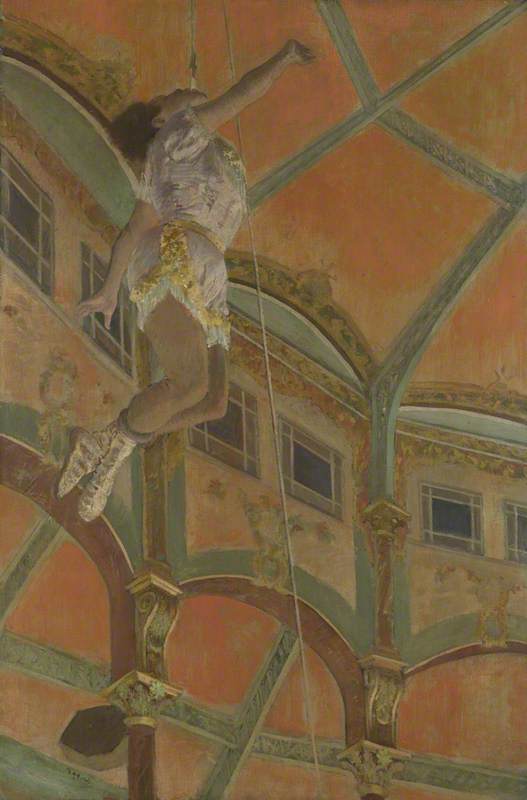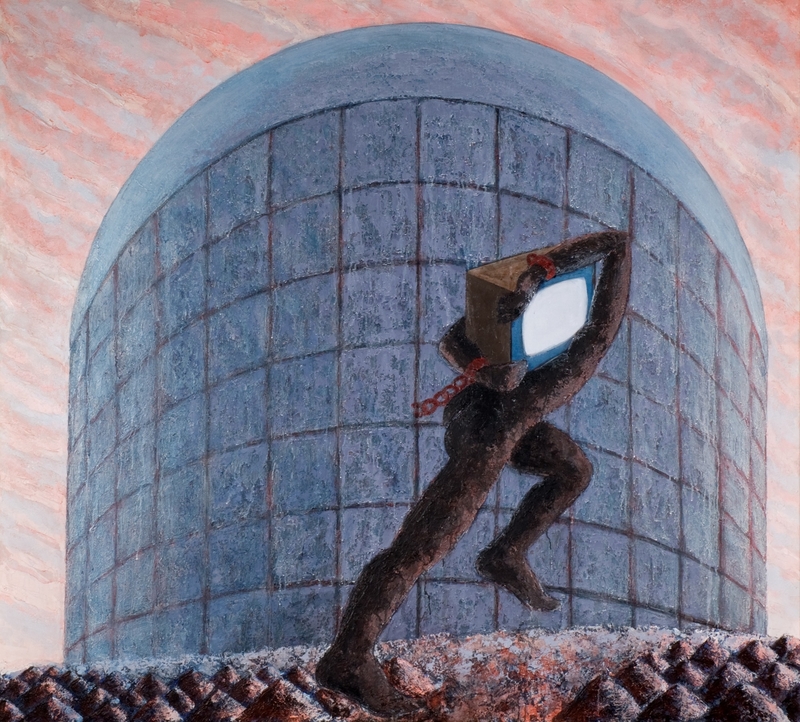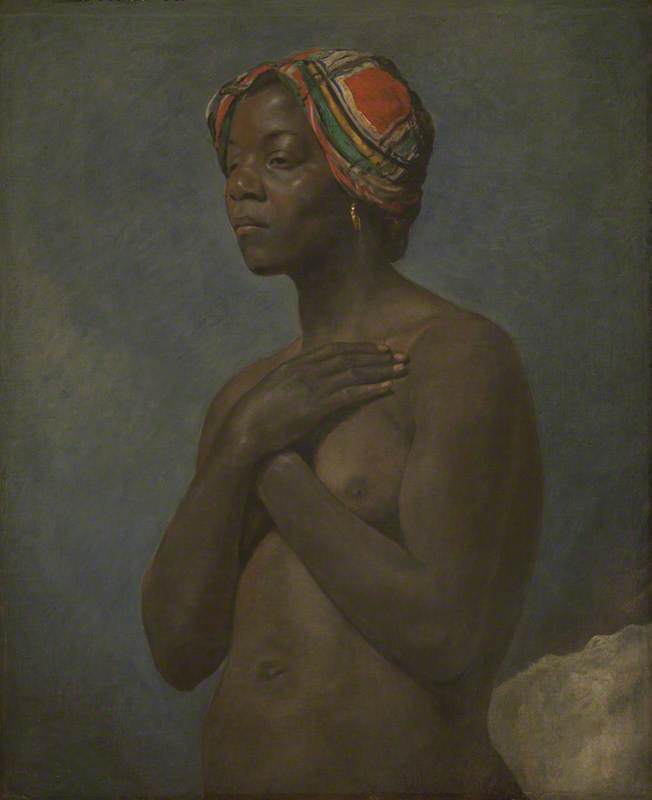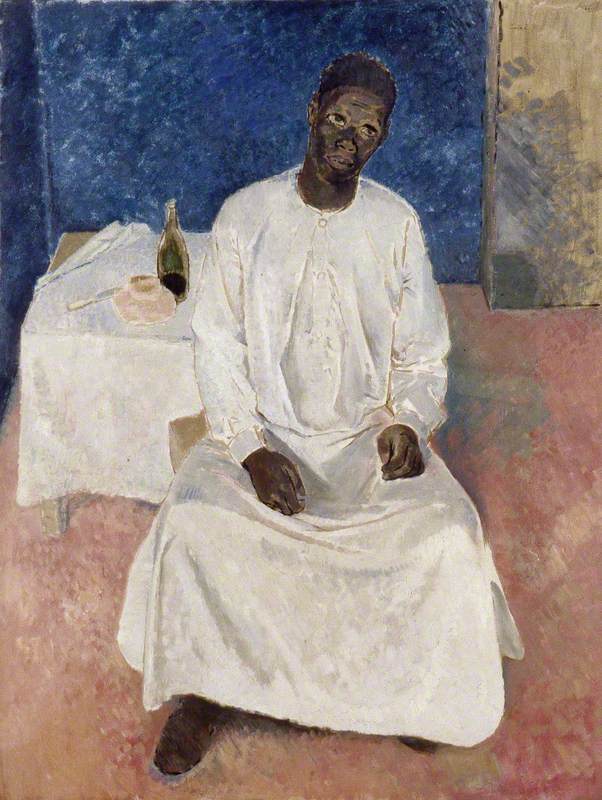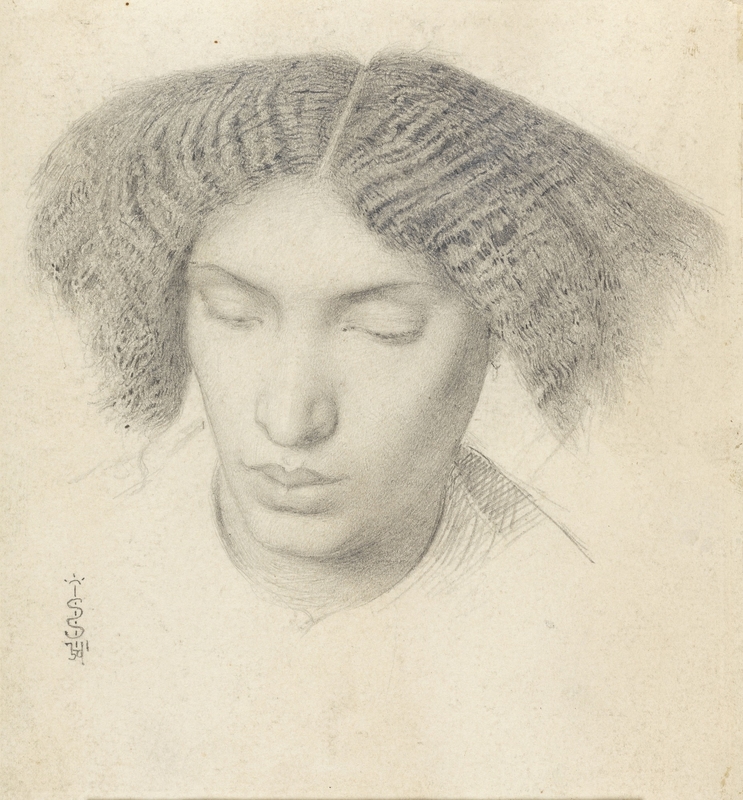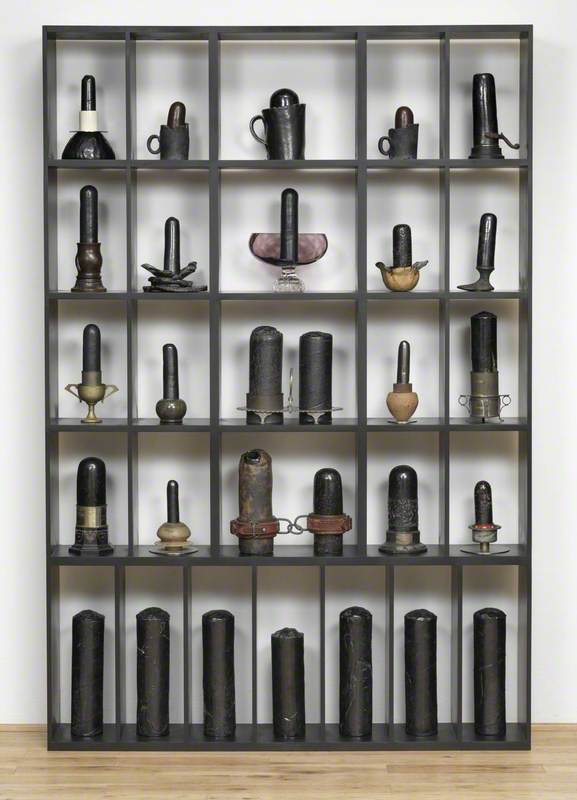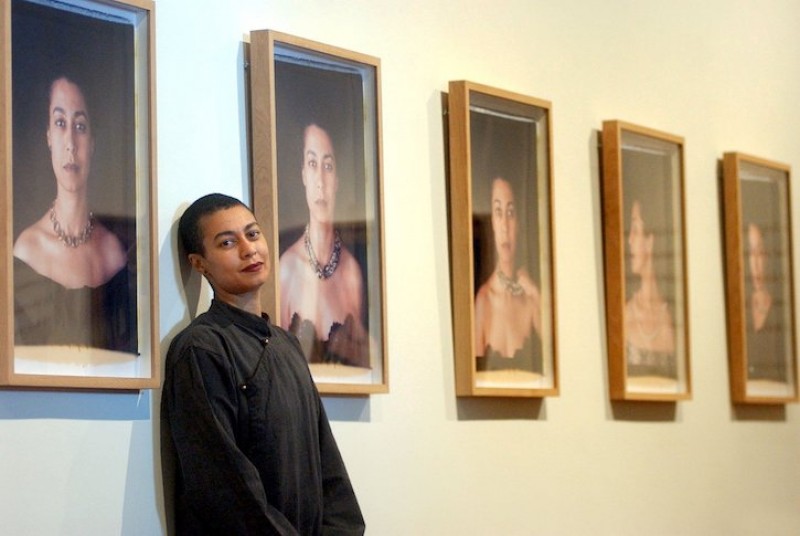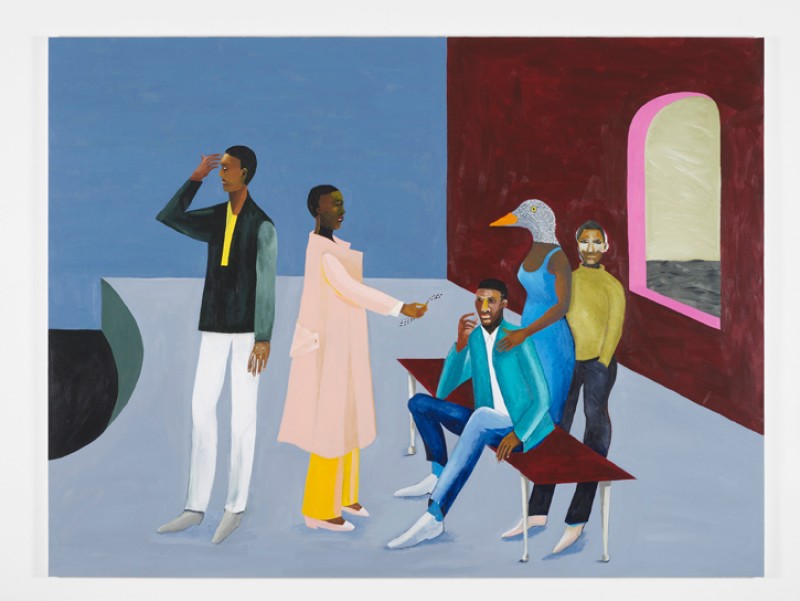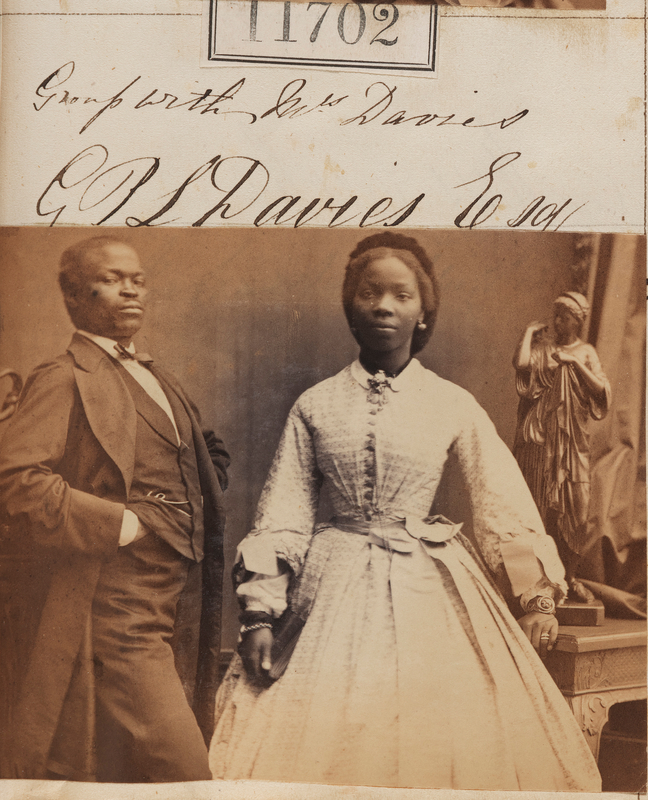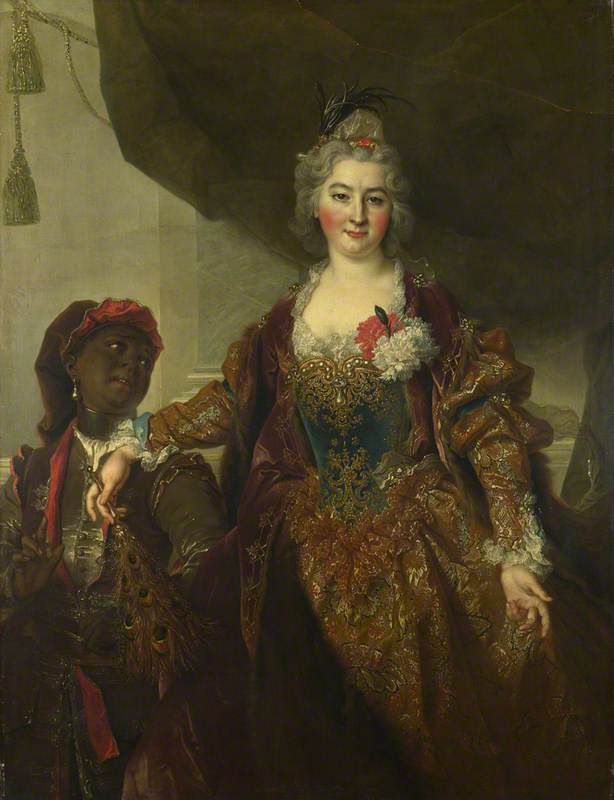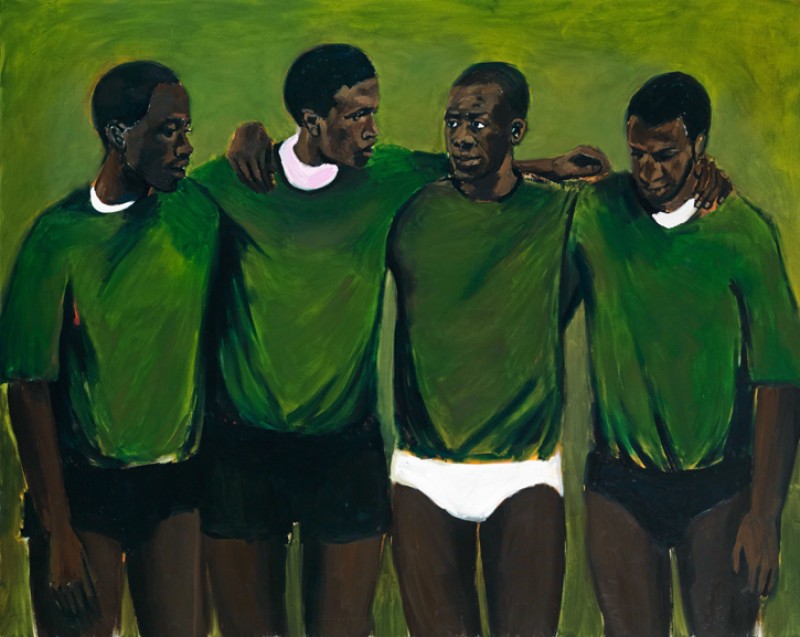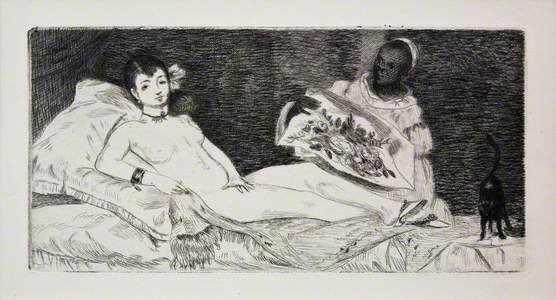Why have black models historically been recognised and researched so infrequently that they're often discussed less than a masterwork's background furniture or baskets of fruit?
The answers are as endless as they are ugly. Black lives, until very recently, meant much less to the art and academic worlds, often riddled with bias and palpable contempt. Countless models of colour featured in paintings across the globe sat lying in wait for centuries, near invisible to societies trained not to value them. Fortunately, however, black figures are at last starting to gain attention. One thrilling example can be found on Art UK, in an etched copy of an infamous oil painting featuring a black model named Laure – Édouard Manet's Olympia.
Very few nineteenth-century artworks were as cosmically earth-shattering as Olympia making its debut at the Paris Salon of 1865. Crowds gasped. Critics denounced. With its defiant, unromantic portrayal of a nude, female sex worker attended by her maid of colour, Manet invited elite crowds to confront the actualities of contemporary French life. Largely, they refused.
If Manet had stepped outside of bounds depicting sex work so brazenly, he did so twofold with his inclusion of a realistically rendered black woman rather than the typical racist caricatures in French media. Offering her employer flowers from a possible admirer, the maid occupies significant square footage on the canvas. With her gentle, yet expressive gaze, she would no doubt have reminded its first audiences of the growing diversity in the city. Unsurprisingly, the maid was dismissed as only the 'negress' in 1865, not escaping critics' revulsion for the work, who if anything, said the figure added to the illicit nature of the painting.
Olympia
1863, oil on canvas by Édouard Manet (1832–1883) 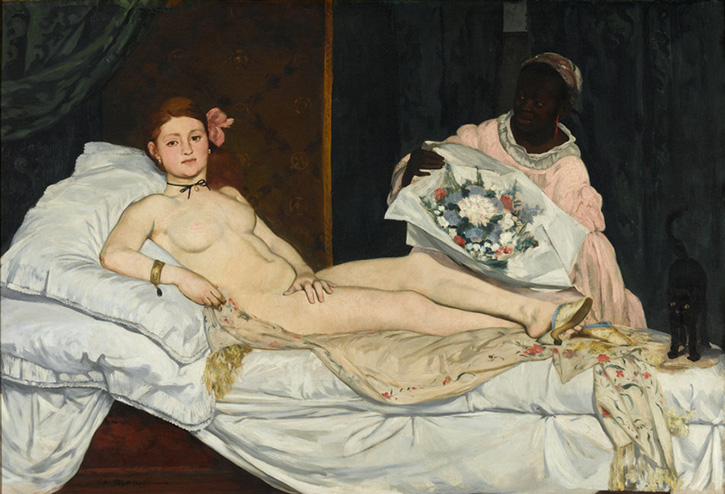
Despite initial reception, Olympia was destined to become an art history icon, inspiring subsequent modern art movements, thousands upon thousands of written words, and lively debate well into 2024. From art historian to art lover, everyone drooled over getting the chance to analyse the reclining courtesan modelled by artist Victorine Meurent. Rarely was anything said about her ‘co-star'. Like the myriad young black men adorning the backgrounds of aristocratic portraits – brushed off as near-invisible props throughout decades of historical discourse – she was labelled insignificant.
Charles Stanhope, 3rd Earl of Harrington and Marcus Richard Fitzroy Thomas
1782
Joshua Reynolds (1723–1792) 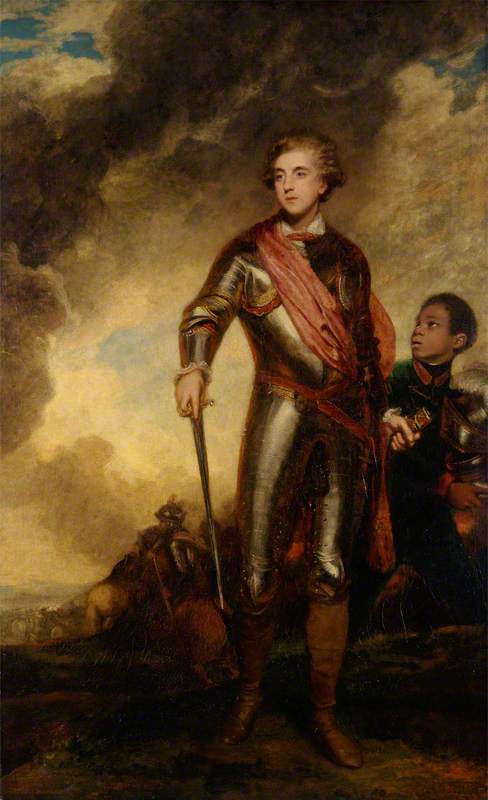
So, what exactly changed? When did the focus begin to shift? And who really was the model named Laure?
Denise Murrell, an American curator and change maker, dedicated her dissertation in 2013 to the examination of the forgotten second woman in Olympia. Only a few years later, an exhibit was formed based on her findings. 'Posing Modernity: The Black Model from Manet and Matisse to Today' opened to the American public in the fall of 2018 and ended in Paris, France in the summer of 2019.
A monumental collection of works featuring women of colour, the exhibition completely flipped convention on its head declaring that black women models were essential to the development of modern art itself – even featured by famous creatives such as Edgar Degas and Henri Matisse. Olympia's black maid was not a waste of space, nor was her living model unworthy of research. They were undeniably a part of history.
Children in the Tuileries Gardens
c.1861-1862, oil on canvas by Édouard Manet (1832–1883) 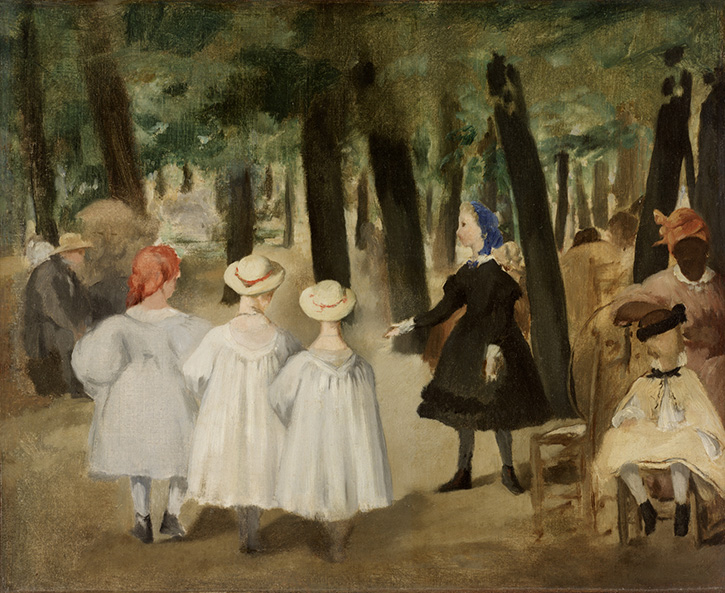
The model Laure, in less than two years, was painted by Manet in three separate works. First, in Children in the Tuileries Gardens; second, for a portrait; third, in Olympia, the image that shocked for over a century. In late 1862, Manet recorded her name in his notes, detailing her as 'très belle' ('very beautiful'). It was undoubtedly quite helpful that her home address, 11 rue Vintimille, was only a few blocks away from his studio.
Paris was abuzz with change. Slavery had been abolished in the French colonies in 1848, leaving behind the bloody stain of oppression and genocide, as well a history of thorough measures to police the black community in France and its territories – with the Code Noir established in the late seventeenth century and the Police des Noirs in the eighteenth. Because of this, a more significant and localised black presence arose in late nineteenth-century Paris, with many living in the ninth and seventeenth arrondissements (neighbourhoods).
Manet and his creative friends, including Claude Monet and Charles Baudelaire, occupied and worked in the same neighbourhoods. Notably, French photographer Fèlix Nadar captured a good deal of portraits that, according to Murrell, showcased people of colour in 'varied walks of life, occupations, and social position' in the 1860s. Nadar's photographs included the famous writer of The Count of Monte Cristo, Alexandre Dumas père, whose father was a black general in the French army during the French Revolutionary War. Of course, he also lived nearby.
Manet was committed to realistic depictions of everyday, ordinary life; the newly formed impressionists, whom he heavily influenced, were just as devoted to capturing life's passing moments outside of studios. Looking to depict scenes separate from the mythical or fantastic, it was no wonder that Laure intrigued this innovative trendsetter.
Even though little is known about Laure as of yet, she belonged to a black community of immigrants, expats and visitors with too many rich and distinctive stories to recount, as well as a line of paintings, sculptures, and photographs starring black women in France before and after her.
One amazing instance is held at The National Gallery. Miss La La regularly defied gravity at the Cirque Fernando, flying through the air by only her teeth and a leather mouthpiece. Born as Anna Albertine Olga Brown in 1858, she started travelling and performing as a child, later invented her popular ‘Iron Jaw' routine, and was half of the acrobatic team known as ‘Olga and Kaira' with Kaira la Blanche (born Theophila Szterker). Impressionist Edgar Degas, known for his popular yet somewhat haunting paintings of ballerinas, took on the challenge of reproducing the aerial act in a painting that debuted in 1879.
Portrait d'une femme noire
1800, oil on canvas by Marie-Guillemine Benoist (1768–1826) 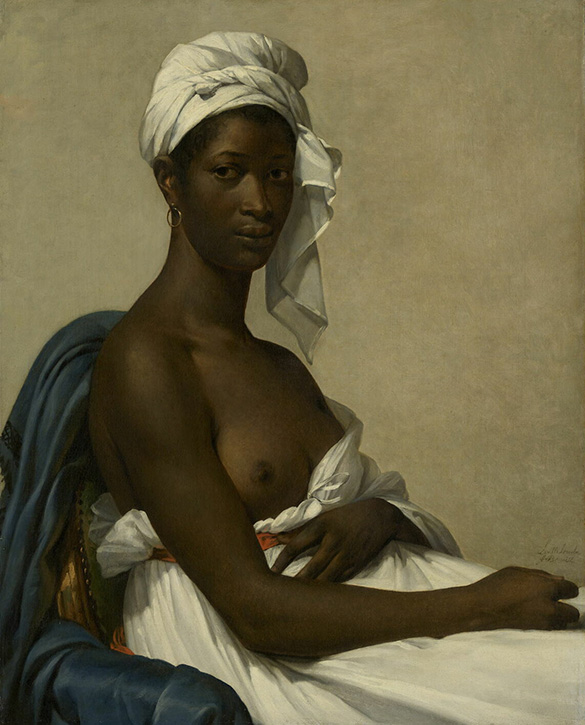
With exhibitions such as 'Posing Modernity' widening the lenses of history to make brand new connections between French artists such as Manet, Matisse, and Marie-Guillemine Benoist, it's humbling to see the possibilities of historical exploration outside of previously typical limits. For some figures, it was their name that was left unrevealed until now; for others, it was their presence entirely.
As in the case of Olympia, exploring the context around one mysterious face can burst open endless doors to stories and global exhibitions never thought plausible. While we cannot totally undo the damage of past inattention and bias in art and history, there will always be power in focus: power in leaning forward and looking within your favourite painting for something different. And, to your surprise, there it is.
Zaria Ware, author and curator
Further reading
T. J. Clark, The Painting of Modern Life: Paris in the Art of Manet and His Followers, Princeton University Press, 1999
Laurence Madeline, Women Artists in Paris, 1850–1900, Yale University Press, 2017
Robin Mitchell, Vénus Noire: Black Women and Colonial Fantasies in Nineteenth-Century France, University of Georgia Press, 2020
Denise Murrell, Posing Modernity: The Black Model from Manet and Matisse to Today, Yale University Press, 2018
Olivette Otele, African Europeans: An Untold History, Hurst, 2020
Melissa Smith, 'How a Businesswoman Became a Voice for Art's Black Models', New York Times, 2018
Yale University Press, 'Q&A with Denise Murrell, author of Posing Modernity', 2019
Lisa Ze Winters, The Mulatta Concubine: Terror, Intimacy, Freedom, and Desire in the Black Transatlantic, University of Georgia Press, 2015

